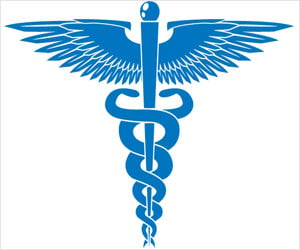The Accreditation Council for Graduate Medical Education (ACGME) imposed a mandatory maximum 80-hour work-week restriction on medical residents in July 2003.

The reduction in resident work hours was mandated to eliminate errors in patient care due to residents' sleep deprivation. The researchers "sought to determine if regulation of neurosurgery resident duty hours has resulted in significant changes in readily available measures of clinical outcome such as in-hospital mortality, discharge disposition, in-hospital complications, or in-hospital procedures." For this purpose the researchers examined data from the Nationwide Inpatient Sample, a very large, hospital administrative database. The study was limited to a single specialty, neurosurgery, in training hospitals to avoid wide variations in diseases and in-hospital treatments across medical specialties. Neurosurgery was also chosen because before the 80-hour limit, duty hours shared by neurosurgery residents were considered quite high with respect to other specialties—a fact the researchers believed would magnify the effect of the new regulation.
Before the ACGME mandate, a move toward fewer duty hours had been initiated in the state of New York on July 1, 1989. To address the greatest potential bias of the study—"the effect of passage of time on clinical outcomes irrespective of individual interventions"—the researchers made four comparisons of clinical outcomes before and after the ACGME regulations came into effect in training hospitals located in New York State (NY) and elsewhere. With respect to these questions, the researchers examined the primary outcomes of in-hospital mortality and hospital discharge disposition (to home, long-care facility, or elsewhere) as well as the secondary outcomes of length of hospital stay, hospitalization costs, in-hospital complications, and in-hospital procedures.
The comparisons and associated findings were as follows:
Comparison 1: Differences in clinical outcomes between regulated training hospitals in New York State (NY) and unregulated training hospitals in other states before the ACGME regulations were implemented (NY 2000-2002 vs. non-NY in 2000-2002)
Despite statewide-imposed regulations in New York State, the researchers found no significant differences in clinical outcomes between regulated training hospitals in New York and unregulated training hospitals in other states before the ACGME regulations came into effect. In this comparison, the researchers did find a significantly lower mean length of hospital stay and a significantly higher mean cost of hospitalization in the non-NY hospitals.
Advertisement
The researchers found no significant changes in clinical outcomes in non-NY training hospitals after the ACGME regulations came into effect. At first examination there seemed to be a significant difference in hospital discharge disposition, but this difference became insignificant when the analysis was adjusted for patient age and sex as well as risk factors.
Advertisement
Comparison 3: Differences in clinical outcomes in NY training hospitals before and after the ACGME regulations were implemented (NY 2000-2002 vs NY 2004-2006)
The researchers found no significant changes in clinical outcomes in NY training hospitals after the ACGME regulations came into effect. Significantly more patients were identified as having sepsis or needing mechanical ventilation in NY training hospitals after the ACGME regulations were implemented. In addition, statistically significant differences were identified in a longer mean length of hospital stay and higher hospital charges after the regulations were put in place.
Comparison 4: Differences in clinical outcomes between non-NY and NY training hospitals after the ACGME regulations were implemented (non-NY 2004-2006 vs NY 2004-2006)
With ACGME regulations in place, the researchers found some significant differences in clinical outcomes between non-NY and NY training hospitals. A multivariate regression analysis taking into account adjustments for patient age and sex, as well as risk factors, found statistically significant differences in hospital discharge disposition: after the ACGME regulations were in effect, there were significantly fewer discharges to home and significantly more discharges to long-term facilities in the NY hospitals compared with the non-NY hospitals.
In addition, statistically significant differences were found between the two groups with respect to mean length of hospital stay, with longer stays shown in the NY hospitals.
Concern about the effects of sleep deprivation on residents' performance and, consequently, on patient care spurred both the New York State and ACGME mandates on reduced duty hours. The authors of this paper studied clinical outcomes in patients treated by neurosurgery residents to see if statistically significant improvements in patient care occurred after neurosurgery residents' duty hours were reduced. They found no significant effect on in-patient mortality rates, but they did find statistically significant increases in discharge to long-term-care facilities and in the frequency of a few postoperative complications.
The researchers cite other studies that address negative impacts of reduced duty hours on neurosurgery resident training, such as lower examination scores and decreased number of resident presentations at neurosurgery society meetings. They suggest that further modifications of regulations governing duty hours could lead to less operative experience, longer residencies, and the need for a greater number of residents to cover patient care, and greater costs for implementation of new regulations.
Source-Eurekalert










